#not a coral reef
Text
The company's commercial for titanic scientific exploration sea trip are shots of Titanic over calm, content, even happy piano and I can't anymore
a) that's a mass grave
and
b) which part of haunting deepest ocean dephts where a catastrophic ship wreck lays as an ominous reminder of human arrogance is cheerful to you
41 notes
·
View notes
Text
Since Percy can talk to sea creatures, I'd like to think that one day he passed a pet shop with all these fish screaming at him in agony. Since then there has been a giant aquarium in cabin 3 with fish. He converses with them daily when he's at camp. He gave them all names (they were delighted to hear his suggestions).
There is one grumpy grouch that always tries to eat as much food before all the other fish. He has to keep him forcibly apart in a tiny water ball during dinner. He named him Zeus. Percy doesn't give a shit. Poseidon knows and thinks it is hilarious.
Chiron, who takes care of them when Percy's gone, cannot understand them but he doesn't like the way they look so judgemental. They are very much gossiping about him to his face.
#pjo tv show#pjo fandom#pjo series#percy jackson#percy jackon and the olympians#headcanon#i also like to think that wild creatures also want to have a name so when he's just chilling in the sea there are random fish coming to him#brutus the coral reef overlord#which is a guppy
7K notes
·
View notes
Text
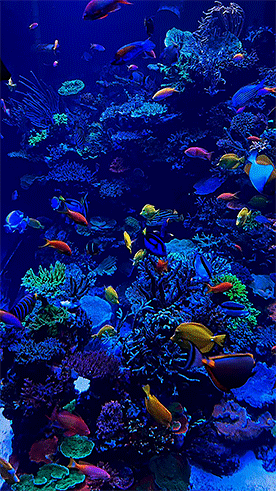

polo_reef on ig
#underwater#fish#stim#sensory#satisfying#mypost#mygifs#aquarium#reef#blue#royal blue#blacklight#coral reef#hands free#handsfree#tropical
13K notes
·
View notes
Text
tumblr used to be a high throughput reef ecosystem but then they banned titties and now we’re like an ecosystem in the abyssal sea floor just quietly chugging along, cycling through nutrients at a much slower rate.
then every once in a while a some huge news comes along like queendeath and it’s like a whale fall, we come crawling out of the woodwork like isopods, hagfish, and burrowing worms to feast on the memes for years
it’s been almost two years since destiel-putin-election and we still linger around those bones like limpets
52K notes
·
View notes
Text
"The coral reefs of south Sulawesi are some of the most diverse, colorful and vibrant in the world. At least, they used to be, until they were decimated by dynamite fishing in the 1990s.
As part of a team of coral reef ecologists based in Indonesia and the UK, we study the reefs around Pulau Bontosua, a small Indonesian island in south Sulawesi...
In many places around the world, damage like this might be described as irreparable. But at Pulau Bontosua, the story is different. Here, efforts by the Mars coral restoration program have brought back the coral and important ecosystem functions, as outlined by our new study, published in Current Biology. We found that within just four years, restored reefs grow at the same rate as nearby healthy reefs.
Speedy recovery
The transplanted corals grow remarkably quickly. Within a year, fragments have developed into proper colonies. After two years, they interlock branches with their neighbors. After just four years, they completely overgrow the reef star structures and restoration sites are barely distinguishable from nearby healthy reefs.
The combined growth of many corals generates a complex limestone (calcium carbonate) framework. This provides a habitat for marine life and protects nearby shorelines from storm damage by absorbing up to 97% of coastal wave energy.
We measured the overall growth of the reef framework by calculating its carbonate budget. That's the balance between limestone production (by calcifying corals and coralline algae) and erosion (by grazing sea urchins and fishes, for example). A healthy reef produces up to 20kg of reef structure per square meter per year, while a degraded reef is shrinking rather than growing as erosion exceeds limestone production. Therefore, overall reef growth gives an indication of reef health.
At Pulau Bontosua, our survey data shows that in the years following restoration, coral cover, coral colony sizes, and carbonate production rates tripled. Within four years, restored reefs were growing at the same speed as healthy reefs, and thereby provided the same important ecosystem functions...
Outcomes of any reef restoration project will depend on environmental conditions, natural coral larvae supply, restoration techniques and the effort invested in maintaining the project. This Indonesian project shows that when conditions are right and efforts are well placed, success is possible. Hopefully, this inspires further global efforts to restore functioning coral reefs and to recreate a climate in which they can thrive."
-via Phys.org, March 11, 2024
#coral#coral reef#marine life#marine biology#sea creatures#aquatic#environment#ecology#environmental news#environmental science#climate action#climate hope#ecosystem#conservation#endangered species#indonesia#sulawesi#good news#hope#overfishing#hopepunk#hope posting
3K notes
·
View notes
Text
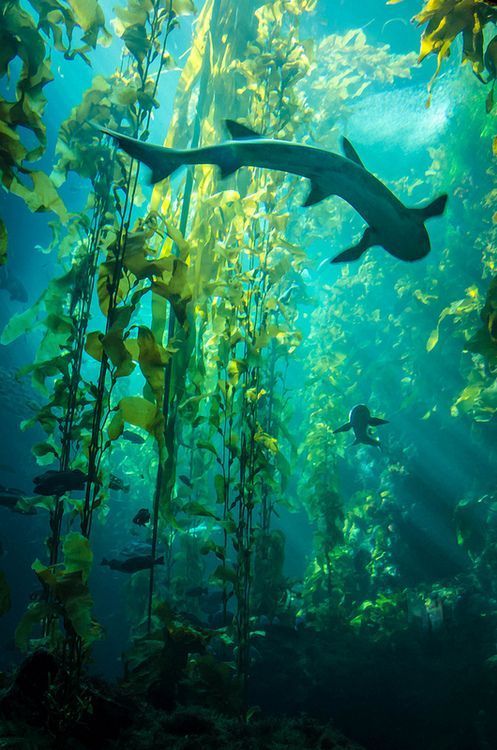
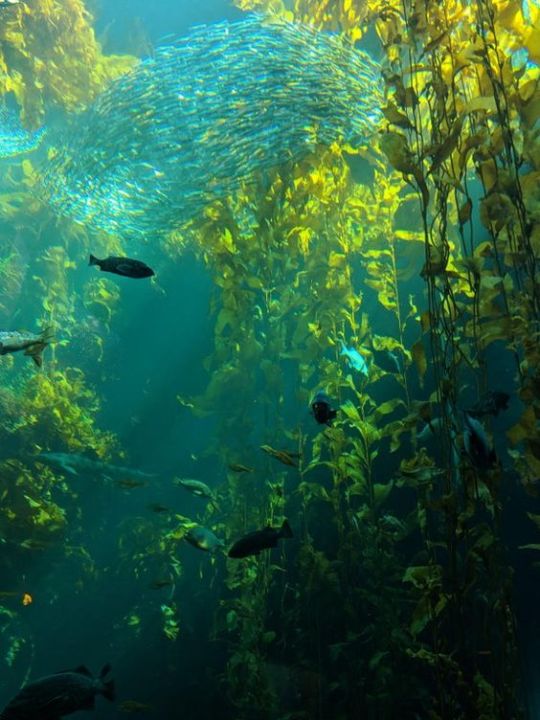


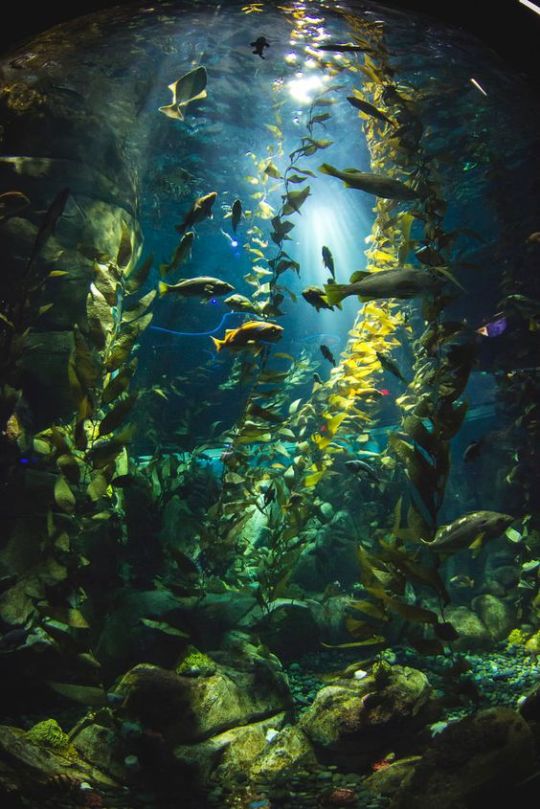
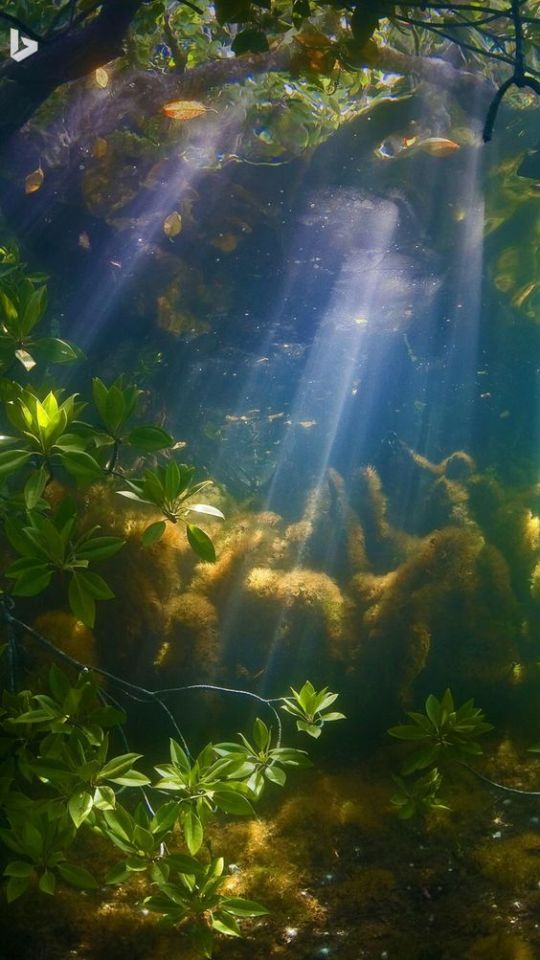



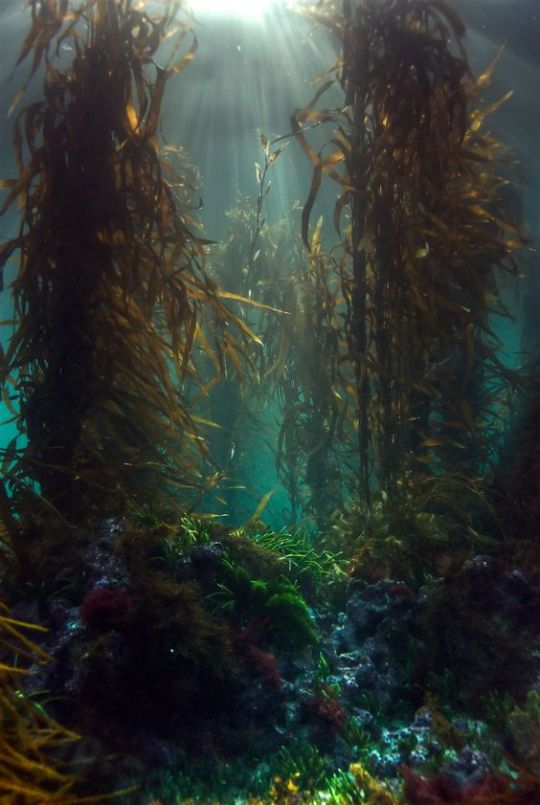
Take me home
#places#sea#ocean#water#pisces#underwater#sirencore#mermaid#siren#kelp garden#coral reef#marine photography
22K notes
·
View notes
Text
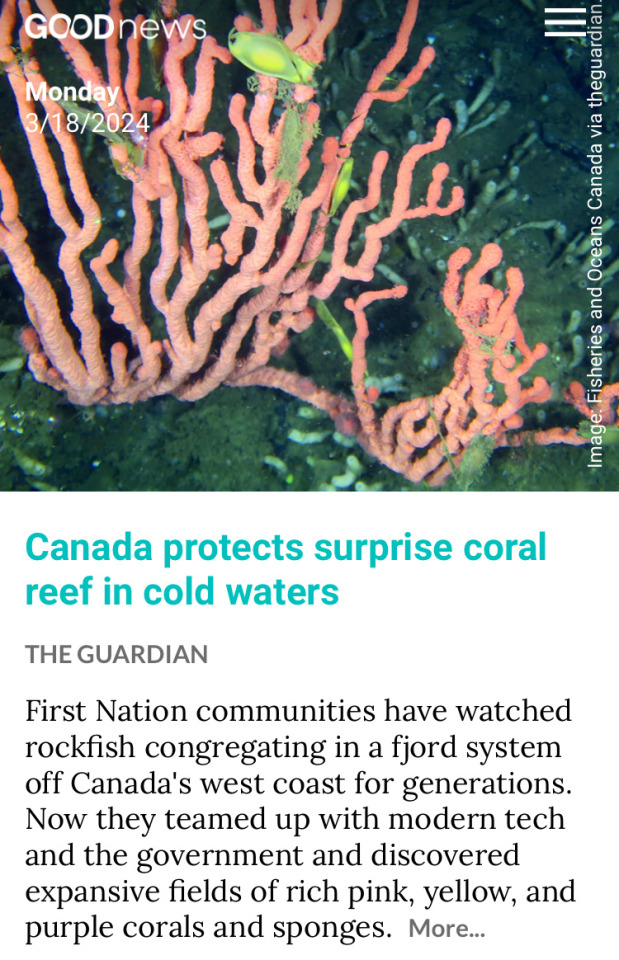
#good news#environmentalism#science#first nations#canada#coral reef#coral reefs#environment#nature#animals#conservation
3K notes
·
View notes
Text
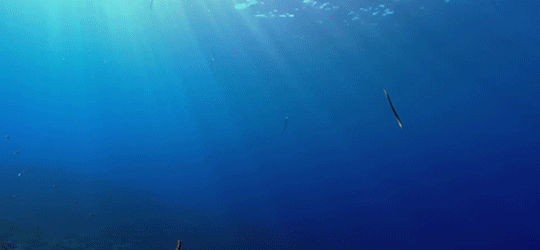
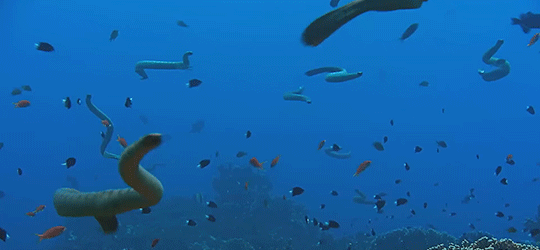



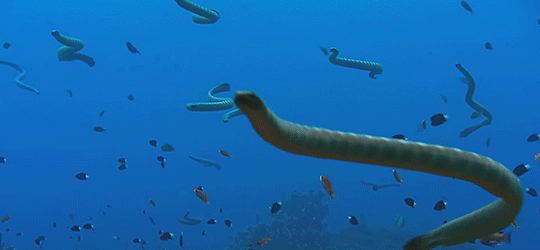

Most species of sea snakes spend their entire lives in the ocean. To move in this marine environment their bodies have adapted to be tall, thin blade shapes with long paddle-like tails. They cannot breathe underwater, but their lung extends almost the full length of their body to help them retain oxygen underwater and with buoyancy control.
BBC
3K notes
·
View notes
Text

Ace coral, just because.
1K notes
·
View notes
Text
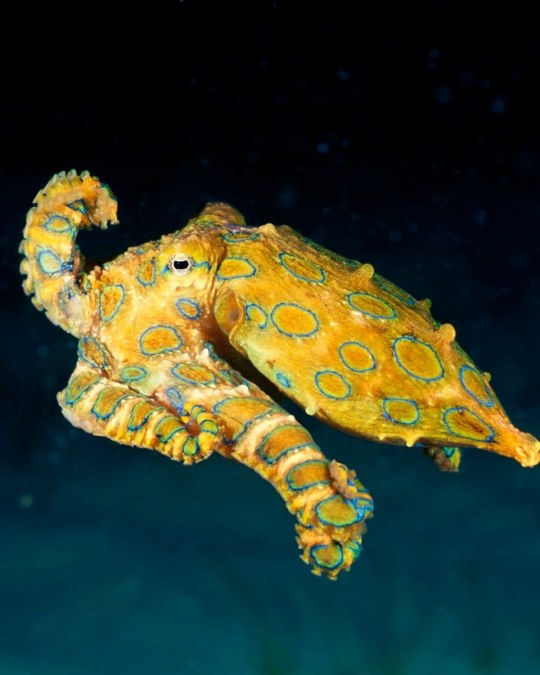
Did you know? Blue-ringed octopuses (members of the genus Hapalochlaena) are among the world’s deadliest cephalopods. Found in coral reefs in the Indian and Pacific oceans, these critters typically measure less than 8 in (20.3 cm) long. But, they pack a venomous bite that is potent enough to instantly paralyze, and even kill, a human being.
Photo: Angell Williams, CC BY 2.0, flickr
#science#nature#natural history#animals#fact of the day#did you know#octopus#blue ringed octopus#ocean life#marine biology#coral reef#cephalopods
745 notes
·
View notes
Text
So, I drew the other Gem Mermaids as Guppies and a basic gist of their time with Grand Reef Below the cut...






#cookie run kingdom#cookie run#crk#black pearl cookie#white pearl cookie#crimson coral cookie#aquamarine cookie#gold citrine cookie#mystic opal cookie#Grand Reef Cookie#mentioned#fan cookie#fan character#guppy au#kinda#random headcanon bs
2K notes
·
View notes
Text

Mantis Shrimp, Seamount High,
Sea-nior Class of 1984
Voted: Best Eyes & Most Likely to Start a Fight
Favorite quote: “Party on, dudes.”
The mantis shrimp is truly bodacious—its radical colors and totally tubular eyes (they can move each eye independently!) are out of this world. It also packs a gnarly punch—capable of cracking glass—making it one of the baddest stomatopods around 💪😎
Rock on mantis shrimp, don’t ever change, and let’s hang out this summer!!
#monterey bay aquarium#shromp week 2023#throwback thursday#seaniors rule the coral reef school#mantis with shrimpin laser beams
4K notes
·
View notes
Text

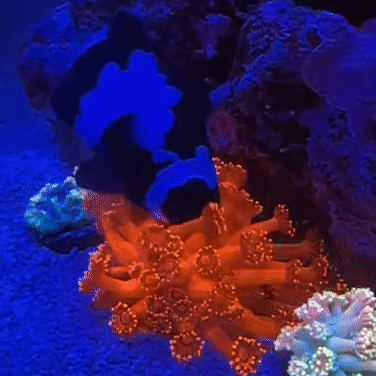







🌈🪸 ~ Ode to Goniopora Coral ~ 🪸🌈
❤️..🧡..💛||💚..💚..🩵||💙..💜..🩷
#stimboard#rainbow#neon#blacklight#black light#coral#coral reef#fish#oceancore#goniopora#rainbow stimboard#rainbow stim#neon stim#neoncore#stim#ocean#ocean stim#rainbowcore#coral reefs#marine animals#marine life#sea creatures#seacore#teal stim#coral stim#ocean coral#coral sea#corals#cool stuff#aliencore
658 notes
·
View notes
Text
A reef that has been degraded—whether by coral bleaching or disease—can’t support the same diversity of species and has a much quieter, less rich soundscape.
But new research from Woods Hole Oceanographic Institution shows that sound could potentially be a vital tool in the effort to restore coral reefs.
A healthy coral reef is noisy, full of the croaks, purrs, and grunts of various fishes and the crackling of snapping shrimp. Scientists believe that coral larvae use this symphony of sounds to help them determine where they should live and grow.
So, replaying healthy reef sounds can encourage new life in damaged or degraded reefs.
In a paper published last week in Royal Society Open Science, the Woods Hole researchers showed that broadcasting the soundscape of a healthy reef caused coral larvae to settle at significantly higher rates—up to seven times more often.
“What we’re showing is that you can actively induce coral settlement by playing sounds,” said Nadège Aoki, a doctoral candidate at WHOI and first author on the paper.
“You can go to a reef that is degraded in some way and add in the sounds of biological activity from a healthy reef, potentially helping this really important step in the coral life cycle.”
Corals are immobile as adults, so the larval stage is their only opportunity to select a good habitat. They swim or drift with the currents, seeking the right conditions to settle out of the water column and affix themselves to the seabed. Previous research has shown that chemical and light cues can influence that decision, but Aoki and her colleagues demonstrate that the soundscape also plays a major role in where corals settle.
The researchers ran the same experiment twice in the U.S. Virgin Islands in 2022. They collected larvae from Porites astreoides, a hardy species commonly known as mustard hill coral thanks to its lumpy shape and yellow color and distributed them in cups at three reefs along the southern coast of St. John. One of those reefs, Tektite, is relatively healthy. The other two, Cocoloba and Salt Pond, are more degraded with sparse coral cover and fewer fish.
At Salt Pond, Aoki and her colleagues installed an underwater speaker system and placed cups of larvae at distances of one, five, 10, and 30 meters from the speakers. They broadcast healthy reef sounds – recorded at Tektite in 2013 – for three nights. They set up similar installations at the other two reefs but didn’t play any sounds.
When they collected the cups, the researchers found that significantly more coral larvae had settled in the cups at Salt Pond than the other two reefs. On average, coral larvae settled at rates 1.7 times (and up to 7x) higher with the enriched sound environment.
The highest settlement rates were at five meters from the speakers, but even the cups placed 30 meters away had more larvae settling to the bottom than at Cocoloba and Tektite.
“The fact that settlement is consistently decreasing with distance from the speaker, when all else is kept constant, is particularly important because it shows that these changes are due to the added sound and not other factors,” said Aran Mooney, a marine biologist at WHOI and lead author on the paper.
“This gives us a new tool in the toolbox for potentially rebuilding a reef.”
Adding the audio is a process that would be relatively simple to implement, too.
“Replicating an acoustic environment is actually quite easy compared to replicating the reef chemical and microbial cues which also play a role in where corals choose to settle,” said Amy Apprill, a microbial ecologist at WHOI and a co-author on the paper.
“It appears to be one of the most scalable tools that can be applied to rebuild reefs, so we’re really excited about that potential.”"
-via Good News Network, March 17, 2024
#coral#coral reef#marine life#marine biology#conservation#ecology#environment#environmental news#endangered species#coral bleaching#virgin islands#science and technology#climate action#climate change#climate hope#soundscapes#sound therapy#good news#hope
2K notes
·
View notes
Text
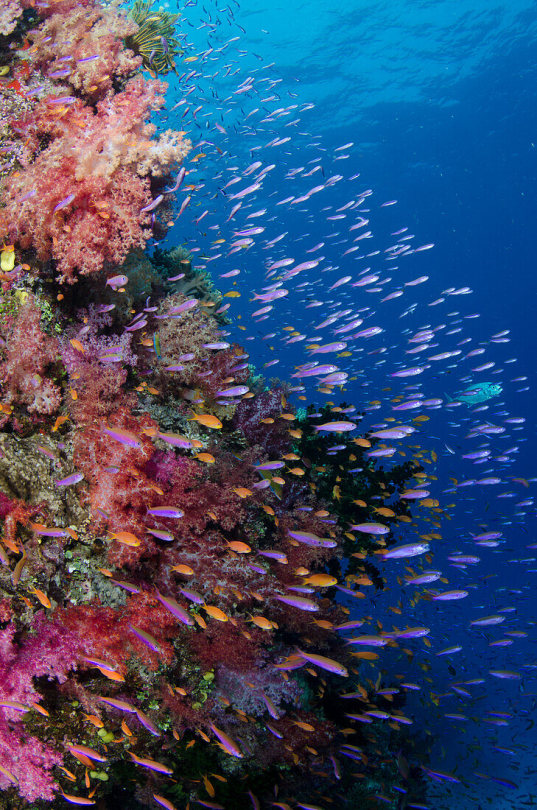

Fiji Reefscape
#fiji#reefs#coral reef#fish#pink#orange#purple#blue#water#ocean#sea#underwater#photography#nature#sea creatures#marine biology
4K notes
·
View notes